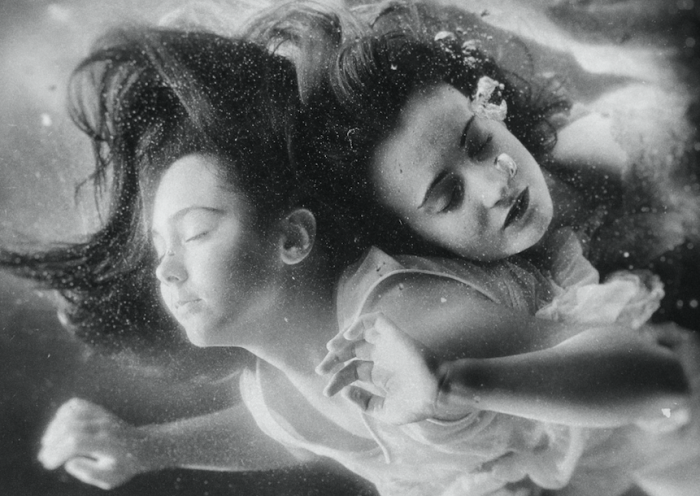For the most part, we refer to our wounded selves as something to be avoided, fixed, numbed, subdued, or cut off.
Our wounded self encompasses our trauma, negative thoughts, and destructive habits, which can create a lot of challenges in our life.
I avoided and ran from my wounded self for most of my life. Like most people, I was taught that this part of me was “bad” and will ruin my life.
So the concept of making friends with my wounded self seemed ridiculous and dangerous. It wasn’t until I had exhausted my energy and every avenue of treatment that I considered taking this new route.
I was introduced to the concept of making friends with my wounded self from a few energy practitioners I worked with. They helped me see that my wounded self is actually my hurt inner child who needs to be heard and taken care of rather than shamed and discarded.
I’ve combined what I learned from these practitioners into an exercise I often do when I know my wounded self needs attention. This is something anyone can do on their own, but it might be better to have support through a therapist or energy practitioner as it can stir up some deep emotion.
Bringing up uncomfortable emotions is difficult, but the whole point of this exercise is to get in touch with the wounded self who’s most likely screaming to be heard. I want to share this exercise as I think it can really help to shift our negative perceptions of our wounded self and can facilitate a healing breakthrough.
1. Set up a comforting and nurturing space.
This is a crucial step because if you don’t feel safe, you may not be able to benefit as much from this exercise.
Your nurturing space can be your bedroom or living room or wherever you feel safe and cared for. Be sure to limit distractions and outside noise. You can use meditative instrumental music and light incense or candles if it helps you relax.
Lie down in a comfortable position and set up pillows and blankets to help you feel nourished and warm.
2. Focus on breathing and relaxing the body.
The goal is to get into a relaxed state. If you practice meditation, this may come easier for you. If not, try not to worry about whether you’re good enough at breathing and just focus on relaxing your muscles while keeping your breathing even.
Work on feeling each part of your body—your hands, feet, stomach, head. Just notice them and the sensations flowing through them. Wait until you have a sense of relaxed heaviness in your body before moving on to the next step.
3. Begin imagining yourself as a child.
Try to imagine yourself in your childhood bedroom. What does it look like? Do you remember your wallpaper, the furniture, toys, or other objects?
See yourself cuddled up in bed. If that’s uncomfortable then maybe see your child self sitting on a chair in the bedroom. Is he or she scared, content, worried? See your adult self sitting with your child self. Think of yourself as a protective and nourishing person.
Just sit with your child self and notice what comes up for you. If this step is too overwhelming, then just stay with this and don’t go any further. If some emotion begins to surface, allow it to happen.
4. Ask your child self what he or she needs from you.
Maybe your child self just needs to be held, or maybe your child self needs to leave that bedroom and find safety for a short time with you.
Whatever he or she needs, see if you can give it to them. Imagine yourself holding your child or picking them up and slowly leaving the bedroom and going out the front door. Maybe you can take your child to a beautiful field or forest or somewhere inspiring.
Imagine yourself as a protector and nurturer to your child self. It’s okay if you’re not perfect or maybe you don’t know exactly how to comfort him or her. Just do your best.
If emotions begin to rise up, let them come. If your child self wants to say something, listen to them. What are they angry or sad about? What grief are they holding? What fears do they have? Just listen without judgment.
Allow this exercise to run its course. If it becomes too uncomfortable and you can’t finish, don’t shame yourself, just go back to your breathing. Once you’ve completed the exercise, try to stay in your relaxed state for a while longer. Wiggle your toes and slowly open your eyes. Try not to get up too fast.
Afterward, if you feel like writing down your reflections in a journal, do so fairly soon after so you don’t forget your insights. Drink a glass of water or herbal tea and refrain from eating or drinking anything that shocks or excites your system.
There’s more you can do with this exercise, but this is a good place to start. The idea is to learn how to embrace our wounded selves rather than running from them. They often just need our attention.
By silencing or compartmentalizing our wounded selves, we may be causing more harm than good. It’s true that our wounded selves can become destructive and challenging, which is why we want to get away from them. We wish to close them off, medicate, numb, or be rid of them. But they will keep coming back in different forms until we finally pay attention.
Sometimes, it takes a long time to learn how to be present and stay in the same imaginary room with our wounded child selves. This exercise can help you do that, but it may require patience.
You may need time to learn how to be with your wounded self in a compassionate way before you can even interact with them. This is completely normal.
These types of exercises don’t offer a quick fix but with time, commitment, and compassion, we can learn to listen and take care of our wounded self.
Sometimes, all they need is their fears, grief, and anger to be heard. Sometimes they need to learn to trust again.
Our wounded selves don’t want to be locked in the closet of your heart.
They need your compassion and nurturance.
They need a light in the dark.
~







Read 4 comments and reply